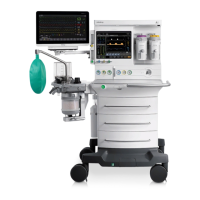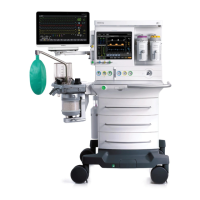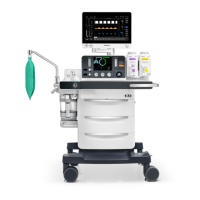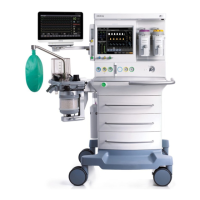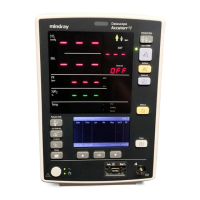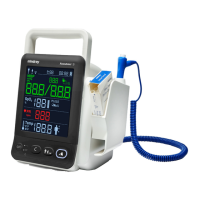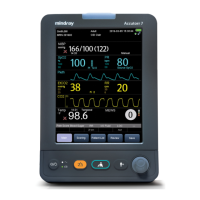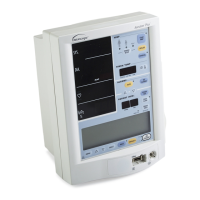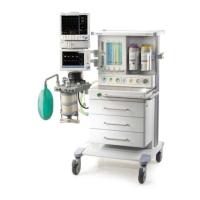Introduction Alarms and Messages
8 - 2 Operator’s Manual of Anesthesia System
8.1 Introduction
The system provides alarms and messages that are indicated to the user by visual and audible alerts.
Alarms and messages display at the top of the Main Screen and in the Alarms window (See Figure 8-1).
Users can adjust alarm properties, which include setting alarm limits to trigger alarm conditions,
adjusting alarm volume, and pausing alarm audio(See Figure 8-1).
Figure 8-1 Alarms and messages on the Main Screen
8.1.1 Alarm System Self-Test
The system performs a self-test of its alarm system when powered on. The self-test is described as
follows:
• During the self-test, the alarm LED will illuminate in sequence with the colors red, yellow,
and cyan for approximately 1 second each color.
• The system speaker produces one tone after the alarm light is in self-test.
8.1.2 Types of Alarms and Messages
The equipment provides the following types of alarms and prompt messages. See (Pages 8-12) 8.8
"Alarms and Prompt Messages" for a list of alarms and prompt messages.
• Physiological Alarm:
Patient-related variables cause physiological alarms. These alarms require a user response.
Physiological alarms can have the following priorities: high, medium, and low.
• Technical Alarm:
Machine-related variables cause technical alarms. These alarms require a user response.
Technical alarms can have the following priorities: high, medium and low.
• Prompt Message:
This is a message to the user. They do not require an immediate user response. These
messages always have the lowest priority, below physiological and technical alarms. It is
displayed in white.
8.1.3 Alarm Indicators
The equipment provides the following alarm indicators:
Alarm Messages Area
Alarm Reset
Soft Key
Audio Pause
Softkey
Alarm Soft Key

